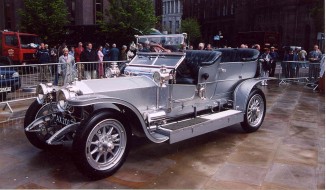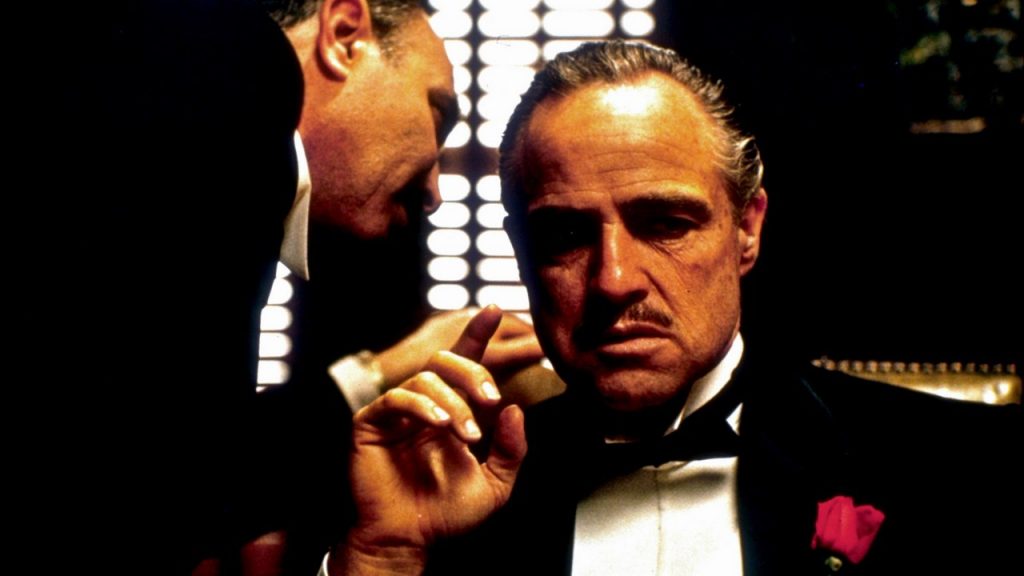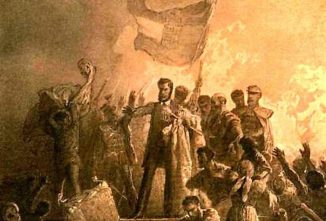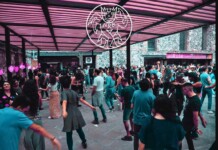Happy 50th Birthday to singer–songwriter, record producer, actor, fashion entrepreneur, and NASA enthusiast Will.i.am (pronounced Will I am).
Legally named William James Adams Jr., he was best known as a rapper in the group Black Eyed Peas, which has released nine studio albums. He also became a coach on The Voice UK, and a prolific producer, recording artists like Michael Jackson, Justin Bieber, Miley Cyrus, U2, Rihanna, Usher, Lady Gaga, and Justin Timberlake. WATCH a Bio and Learn About His Humble Roots And Stargazing Heights… (1975)
Raised in a housing project without a father in Los Angeles, he was able to buy home for his grandmother ten years ago. His career success also includes winning seven Grammy Awards, a Latin Grammy Award, and a Daytime Emmy Award.

As for his love of space, in 2012, for the first time in history, a recorded song was beamed back to Earth from another planet—300 million miles away from Mars—and it was Will.i.am’s composition, “Reach for the Stars”.
MORE Good News on this Day in History:
- Cretan revolutionaries announced the re-unification of Crete with Greece (1905)
- Actors Elizabeth Taylor and Richard Burton were married; her fifth husband, but her true love (1964)
- In the midst of the U.S. Civil Rights struggle in the South and crisis in Selma, President Lyndon Johnson told the Congress, “We shall overcome,” and called for a new Voting Rights Act (1965)
- The passengers and crew of a Pakistan Airways plane were released after they were held hostage for nearly two weeks in Syria (1981)
- The first domain name was registered—Symbolics.com—to a computer systems company in Cambridge, Massachusetts at a time when very few websites were setting up, with fewer than 15,000 .com domains in the next 7 years even bothering to register (1985)
- Mikhail Gorbachev was elected the first executive president of the Soviet Union (1990)
- Yoko Ono unveiled a seven-foot bronze statue of John Lennon overlooking the check-in hall of Liverpool’s John Lennon airport, a re-branding that also features a sketch of Lennon’s face with the words “Above Us Only Skies” (2002)
119 years ago today, Henry Royce and Charles Rolls put their brains and surnames together to form the most iconic luxury car maker in history. Rolls-Royce released the 40/50 in 1908, known as the Silver Ghost which became a hit, and sole offering of the company that had recently set up shop in Derby, before World War I forced them to start making aircraft engines.

In the interwar period, Rolls-Royce released a smaller model and acquired Bently in the 1930s to remove competition for its large-body Phantom III. They refocused their efforts on aircraft engines for the Second World War, and then eventually divided the company into an aerospace and automotive division in 1971.
If you can believe it, a 1987 poll found that only Coca-Cola was more a widely-recognized brand than Rolls Royce. (1906)

And, 133 years ago Jesse W. Reno invented the first working escalator and received his patent on this day. An engineering graduate from Lehigh University in Pennsylvania, Reno was propelled into the idea while on campus, where he had to climb 300 steps to get to his Chi Phi fraternity house.
He produced the first working escalator and installed it alongside the Old Iron Pier at Coney Island, New York City in 1896. Referred to as the ‘inclined elevator’ or ‘endless conveyor’, the device was an inclined belt with cast-iron slats or cleats on the surface for traction, and traveled along a 25-degree incline. A few months later, the same prototype was used for a month-long trial period on the Manhattan side of the Brooklyn Bridge.
Reno eventually joined forces with Otis (the elevator company) and retired once he had sold his patents. (1892)
 15 years ago today, following a devastating earthquake in Haiti, Fashion For Relief began an online auction with donated items worn on the runway at London’s Fashion Week by some of the biggest celebrities. Organized by supermodel Naomi Campbell, the auctions raised well over £1 million for Haitian families in need of health care.
15 years ago today, following a devastating earthquake in Haiti, Fashion For Relief began an online auction with donated items worn on the runway at London’s Fashion Week by some of the biggest celebrities. Organized by supermodel Naomi Campbell, the auctions raised well over £1 million for Haitian families in need of health care.
Since 2005, when Fashion For Relief was founded by Campbell to mobilize funds for Hurricane Katrina victims, the events and related auctions have raised £15 million for those most affected by natural disasters and in need. Watch a video on Good News Network from the Haiti relief fashion show. (2010)
Also, 53 years ago today, The Godfather premiered in the United States. Based on a novel of the same name by American Mario Puzo, Paramount acquired the rights for a petty $80,000, and set the budget at $2.5 million. It was the highest-grossing film ever made for quite a while, earning between $246 and $287 million at the box office. Recognized as one of if not the greatest films ever made, Paramount had wanted to follow up on a very poor Mafia film they had released some years before by making The Godfather “ethnic to the core,” involving as many ethnic Italians, Sicilians, and Italian Americans as possible.

Pacino was Coppola’s favorite for the role as he could picture him roaming the Sicilian countryside, and wanted an unknown actor who looked like an Italian-American. However, Paramount executives found Pacino to be too short to play Michael. Dustin Hoffman, Martin Sheen, and James Caan (who would play Sonny) also auditioned. Burt Reynolds was also offered the role but Marlon Brando was threatening to quit if Reynolds came on board so Reynolds turned down the role. Jack Nicholson was even offered the role but turned it down as he too felt that an Italian-American actor should play the role.
The casting of Marlon Brando as Don Vito Corleone was originally dismissed because it was believed his career was waning, and that he was hard to work with, but it was a career turning point, putting him back on top and winning him his second Best Actor Oscar. Robert De Niro’s career was also made—winning an Academy Award for Best Supporting Actor, playing the young Vito Corleone in the sequel, The Godfather Part II. (1972)
And, 177 years ago today, the ‘People’s Spring’ unfolded in Hungary, as a band of youth sparked a mostly non-violent revolution that, in a few short days, won back freedom and independence from the Habsburg royalty who ruled them from Austria. Medical students, philosophers, and writers like Mór Jókai, joined the famed poet Sándor Petőfi near Budapest, as he raised his voice in a local café declaring a list of 12 demands—and reciting his fiery poem, the “National Song”.

The conservative Austrian Empire had moved too far from the ideals that illuminated the Age of Enlightenment—it restricted freedom of the press, clamped down on university activities, and banned certain associations and groups.
The determined reformers left the coffee shop, seized a large print shop and duplicated the list for distribution. The growing crowd moved to the National Museum, and seized the University and City Hall. About 20 thousand crossed the Danube to the doorstep of the Imperial Governing Council demanding the abolition of censorship and release of any political prisoners—and won the release of a journalist.

The same day a sympathetic parliamentary delegation carrying notable citizens and 72 officials boarded two steamships for Vienna, carrying their demands to the Throne. In just two days, the group returned back to Pozsony carrying with them triumphant news that Emperor Ferdinand V had buckled under the pressure and signed their reforms. Kossuth, the man who dubbed their trip the “Voyage of the Argonauts”, knelt and exclaimed “We bring to our country… Independence and Greatness.” As a result, a new Hungarian Parliament, with Lajos Batthyány as its first Prime Minister was established and the government passed a sweeping package of reforms called the “April laws”, creating the basis for a liberal democracy. March 15 has since become a national holiday in Hungary.
READ the 6-stanza poem that inspired the rebels… (1848)
SHARE the Memories, Milestones, and Music…





















[…] post Good News in History, March 15 appeared first on Good News […]
[…] Good News Network. What good things happened on this day in history, March 15? On this day 15 years ago, Yoko Ono was on site to unveil a seven foot bronze statue of John Lennon overlooking the check-in hall of Liverpool’s John Lennon airport. The re-branding of the airport featured a sketch of Lennon’s face with the words “Above Us Only Skies.” (2002) The post Good News in History, March 15 appeared first on Good News Network. Read More […]
[…] Good News Network. What good things happened on this day in history, March 15? On this day 15 years ago, Yoko Ono was on site to unveil a seven foot bronze statue of John Lennon overlooking the check-in hall of Liverpool’s John Lennon airport. The re-branding of the airport featured a sketch of Lennon’s face with the words “Above Us Only Skies.” (2002) The post Good News in History, March 15 appeared first on Good News Network. Read More […]
[…] Good News Network. What good things happened on this day in history, March 15? On this day 15 years ago, Yoko Ono was on site to unveil a seven foot bronze statue of John Lennon overlooking the check-in hall of Liverpool’s John Lennon airport. The re-branding of the airport featured a sketch of Lennon’s face with the words “Above Us Only Skies.” (2002) The post Good News in History, March 15 appeared first on Good News Network. Read More […]
[…] Posted From: https://www.goodnewsnetwork.org/events070315/ […]
[…] syndMarch 16, 2018GoodNewsGoodNews […]